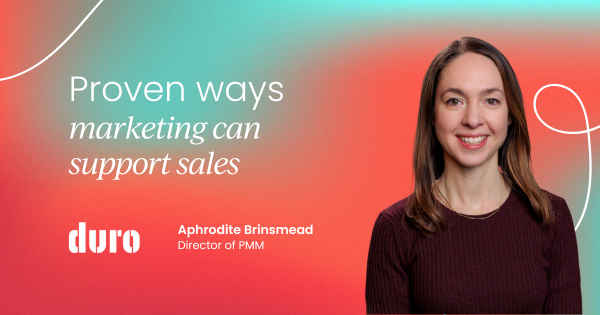One of the key drivers — indeed, the cornerstone — of any effective sales enablement program is the playbook. Here, we'll cut through the noise and show how to create sales playbooks that sellers actually love.
In this guide, we'll be discussing:
- How to get insider the buyer's head
- What sellers want
- Performance metrics
- The do's and don'ts
- A complete sales enablement system
Get inside the buyer’s head
The objective of an effective playbook is to systematize the best practices of an organization’s top performers, enabling every sales rep to replicate their performance and sell like the best.
But the playbooks that work the most are the ones that enable sellers to optimize the buyer’s experience.
From top-of-funnel to closing, each section of the playbook should align with each stage of the sales cycle from the buyer’s perspective. Effective playbook content demonstrates your understanding of the buyer’s world and industry by teasing out their pain points and inducing them to tell their story.
In other words, you want to reverse engineer what buyers are trying to achieve throughout the buying process in order to enable your sales reps to help them reach their objectives.
Content development is not about quantity or speed. It is a strategic, buyer-centric process that needs continuous refreshing in order to meet one goal: staying focused on the buyer’s needs.
What do sellers really want?
Sellers want relevant content, that's easily accessed.
While playbook development does need to be buyer-centric, keep in mind that the sales playbook asset itself is only useful if it gets used. What your salesforce wants — no surprise — is content that helps them win more often and make their numbers. It also needs to be kept relevant and fresh to incorporate new learnings.
Sales people want tools that help them execute great conversations throughout the sales process. They love having tips and best practices at their fingertips, and interactive content is even better. What they don’t want is an encyclopaedia — if your playbook isn’t user-friendly, it won’t get used.

Performance metrics
The best way to gauge your playbook effectiveness is to measure sales rep performance pre- and post-implementation:
- Has their conversion rate improved?
- Are they meeting their sales quotas?
- Are they closing faster than before?
- Have deal sizes increased?
If your answers to the above are no, it’s time to revisit your playbook strategy and ask if it is both customer-centric and user-friendly.
The do’s and the don'ts
What are some best practices for playbook creation? The don’ts are easy: avoid marketing hype and be honest — sales reps don’t appreciate being blindsided by having to defend bogus claims. No long-form dissertations, it’s not a white paper. And don’t use too many personas, which tend to muddy the waters.
As for the do’s:
- Provide relevant information at the right moment in the sales cycle.
- Make it easy to access — and fast.
- Keep it fresh and up to date.
As Daniel Zamudio said on #AventiLive Chat, “The best sellers talk less and ask more.”
A complete sales enablement system
The sales playbook is more than a tool. It’s a strategic, living system that is central to an organizations’ Go-to-Market and a critical asset for executing growth strategies.
There are numerous sales methodology resources available online to help you determine the right path and corresponding content required to meet the needs for your business.


















 Follow us on LinkedIn
Follow us on LinkedIn




.svg?v=a8bbe6f9b2)